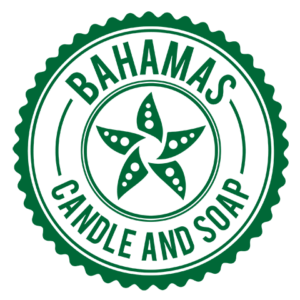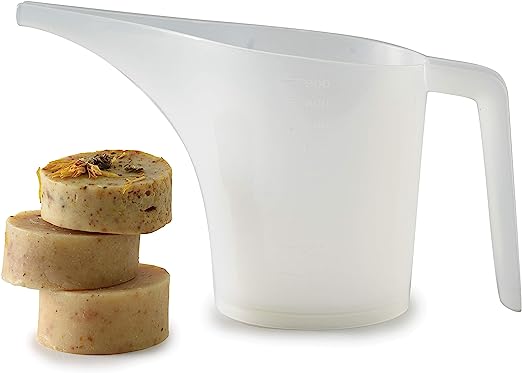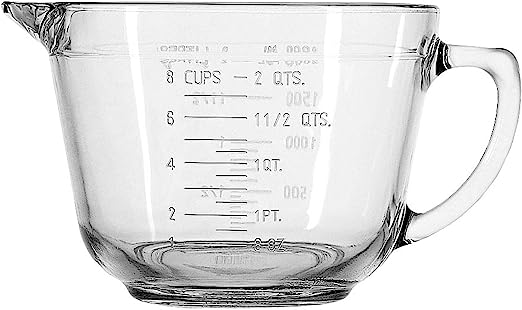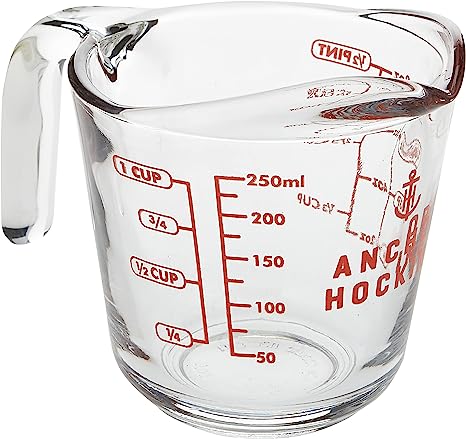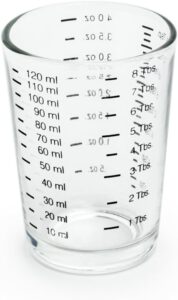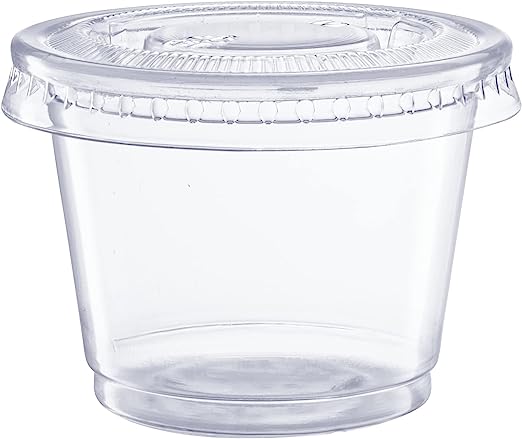As an Amazon Associate Bahamascandleandsoap.com earns from qualifying purchases.
Soap making mixing bowls
There are many containers that can be used to mix your soap making batter or melt and pour. However over time a few items stand out as a standard of safety when it comes to making handmade soap.
In essence as a beginner to intermediate soap maker you will want a bowl that can manage heat, and can be placed in a microwave. This means your bowls and containers should not contain any metal.
This is not to say you cannot use a metal container as we have used a large steel pot to mix large batches of cold process soap.
Many soapers prefer to use a small industrial bucket when it comes to soap making and this can be fine however when it comes to stability and long term use these recommendations below may make more sense.
Oil Mixing
Blending your oils for your soap recipe can be done in basically two ways. The first way is the safest and often considered the most precise way which includes multiple measuring cups. The second uses only one bowl which will become your soap batter mixing bowl.
Whichever you choose your final mixing bowl should be sturdy enough to be be heated by hot oils and to be allowed in a microwave.
We recommend a heat tempered glass bowl with an pouring spout and handle. We have use other items but this has been the longest lasting type of bowl and one that is easy to work with no matter the technique involved.
Recommended Multiple containers
3.5 cup Funnel Pitcher
- Capacity: 3. 5 cups/ 28 ounces/ 900 ml
- Pour liquids, sauces, purees, glazes, batters, frostings, dressing and gravies with no-drip precision.
- Translucent for quick and easy measuring. Easy to view contents.
- Fda and LFGB grade PP. Heat resistant to 320F/160C.
- Dishwasher safe.
When it comes to complex soap making for cold or hot process soap making, it can often be more feasible to measure out your oils in separate containers that allow for easy pouring. We recommend containers with an easy pour lip that can double as a separate mixing bowl with different colors.
These mixing bowls are often plastic and rather inexpensive but yet come in very handy when it comes to soap making. The reason to have more than one container is to make sure you get your measurements correct.
If you use the one mixing bowl and make a mistake adding your third oil you will have to adjust your overall recipe.
Let’s explain below in using one mixing bowl.
Recommended Soap batter mixing
2 Quart Glass Mixing Bowl
- 2-quart clear glass batter bowl. Embossed lines make measuring easy, a molded spout facilitates reliable pouring, and extra-thick glass withstands the stresses of the most demanding kitchen.
- This batter bowl melts, mixes, reheats, and pours.
- Anchor Hocking glass is healthier than plastic and metal. It will not warp, stain, retain smells, or leach dangerous chemicals or microplastics into food or drinks.
The method of combining oils is to use just one main mixing bowl. You place you bowl on the scale and add your first oil. Then you zero out the scale and add the second oil. then the next and so on and so forth.
This saves time but you must be precise in your pouring. As stated above its easier to add than to take away once the oils are being blended in on bowl.
Mistakes do happen but over time you will be come better at this one bowl oil mixture.
You soap batter mixing bowl will most likely be your main oil mixing bowl. This bowl is what we recommend being able to hold at least 2qts of liquid.
Filling your 10 inch loaf mold with soap will be a breeze with this type of heat tempered, 2quart mixing bowl with a pouring spout and handle.
This makes the soap making process so much easier when it comes to pouring your soap batter or your liquefied melt and pour into your soap mold.
The glass is thick enough to withstand the heat of the saponification process and sturdy enough to hold the right amount of batter needed.
We use one regularly but have another on stand by but its been years and this one is still in good working order and very durable.
Recommended Lye Water Mixing
2 Cup (16 Ounce) Glass Measuring Cup
- Easy to read measurements
- Made of Durrable Glass
- Microwave and dishwasher safe
If you have not worked with lye before then it may be best to get a basic understanding of how to deal with lye.
If you have worked with lye before and especially in making lye water you have an idea of how super heated the water can get during this chemical reaction. This heat depending on the technique you are going for can reach over 200 degrees Fahrenheit.
To ensure that your container that you use do not melt or break we recommend using heat tempered glass used in measuring when cooking
Heat tempered glass is heated to over 1000F and then cooled quickly to create a well heat resistant glass. This is why we recommend using heat tempered glass containers.
Warning
Stay away from aluminum containers. Aluminum reacts to lye and can begin to corrode or dissolve in your lye water solution. You do not want to have your soap loaded with dissolved aluminum.
We also recommend 16oz mixing cups to ensure you can mix enough for a full loaf mold.
Recommended Fragrance mixing
Anchor Hocking – 8 oz. Measuring Cup
- Easy to read measurements
- Made of Durable Glass
- Microwave and dishwasher safe
Whether you are using fragrance or essential oil to scent your soap, you will need some way to weigh out the right amount for the amount of soap you are about to make.
Even more critical than fragrance what most persons do not realize is when using essential oil, many can eat through plastic like termites on pine wood. Its this corrosiveness that we recommend that you also use a glass container for your scent.
The easiest option however is to use a small drinking glass that you will dedicate to fragrance alone. This will eliminate the need for any other glass type, however there are times that you may want to use a smaller amount of lye water for smaller batches of soap.
This 8oz heat tempered pouring glass will be versatile enough to cover all your bases.
4-Ounce Mini Measuring Glass, Regular, Clear
- With easy to read lines, this small measuring glass is sure to hit the mark every time. Avoid dishwashing to preserve measurements.
- STURDY CONSTRUCTION: This mini measuring glass is made of thick and clear walled glass, so you can see what you’re measuring without having to worry about wear and tear.
I find that for smaller batches less than a full loaf I opt for a smaller glass that is much easier to use. This is where I opt for the 4oz glass to measure out my fragrance
Remember essential oil and plastic do not play nice together hence measuring out your essential oil in a glass is preferred over using a plastic container.
Recommended Colorant and miscellaneous mixing
Plastic Disposable Portion Cups With Lids
- Stackable and additional separate bags for the containers and lids so to be easy to store and access
- Airtight lids with audible snap closure to ensure secure lid seal and no leaks at all
As you begin to experiment with new techniques you will want to add colorant and other additives to your soap. We have found that having smaller mixing cups to disperse your powdered colors with oil or water works best.
These small cups are small enough to do the job and does not waste your colorant the way a cup will. We used plastic cups initially to mix our colors but realized that you can only mix in the same cup a few times before you begin to loose correct color of have previous colors introduced.
Small plastic cups like the ones you may see in restaurants that you can put condiments in work the best. Depending on how you mix you may be able to re use the same cup about three times before having to throw them away.
